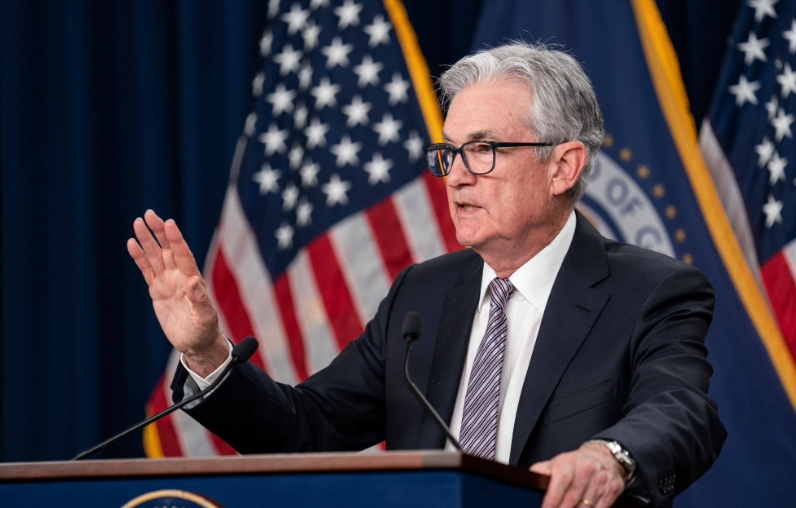In the early hours of September 18 (Beijing time), the Federal Reserve announced an interest rate cut.
This was the Fed’s first rate reduction since December 2024, lowering the federal funds rate by 25 basis points. Reports noted that only Trump’s representative voted against it.
While interest rate hikes and higher land costs for developers are tools to fight inflation, combating inflation is no longer the Fed’s primary concern. Instead, the signal is clear: U.S. monetary policy has shifted from curbing inflation to boosting employment.
Currently, sluggish income growth, weak income expectations, and a lack of consumer confidence lie at the heart of economic stagnation and the real estate downturn.

Global Conditions Create Room for Rate Adjustments
A combination of domestic and international factors has set the stage for a cut in China’s Loan Prime Rate (LPR). Externally, the Fed’s expected rate-cut cycle—possibly three reductions of 25 basis points each before year-end—will narrow the U.S.-China interest rate gap, ease depreciation pressure on the renminbi, and provide more flexibility for China’s monetary policy.
Global monetary shifts caused by the Fed’s moves alter capital flows and financing costs worldwide. Narrowing the rate gap enhances the attractiveness of renminbi-denominated assets and reduces capital outflow risks, giving China’s central bank more room to adjust policies domestically. This creates favorable conditions for LPR reduction.
Mortgage Rate Adjustment on September 22
Among all factors shaping the housing market, mortgage rates remain pivotal. On September 22, mortgage rates will undergo a significant adjustment, a development likely to ripple across China’s real estate sector.
In recent years, faced with complex global conditions and domestic economic pressure, China has relied on monetary policy as a key lever to stimulate growth and investment. Mortgage rates, directly tied to LPR, serve as a crucial transmission channel. With real estate already under strain from oversupply and slow sales, lowering mortgage rates has become a necessity.
Experts predict that the 5-year and above LPR will likely see a downward adjustment. Since nearly 99% of mortgages are linked to this rate, both new and existing borrowers stand to benefit.
For example, when the 5-year LPR was cut by 10 basis points to 3.5% on May 20, borrowers with a ¥1 million loan over 30 years saved about ¥19,000 in total repayments. A new adjustment will once again ease borrowers’ burdens—lowering monthly payments by hundreds of yuan and freeing disposable income for households.

Impact on Homebuyers
For buyers, the effect is straightforward—lower costs. With a ¥1 million mortgage over 30 years, a 0.5% rate cut could reduce monthly payments by about ¥300 and save more than ¥100,000 in interest over the term.
This directly relieves financial pressure, particularly for first-time buyers. Many households that previously postponed purchases due to high costs may re-enter the market, boosting overall demand.
Additionally, rate cuts shape expectations. When borrowing costs fall, buyers often anticipate rising home prices, accelerating their decision-making and injecting momentum into the market. For those seeking better housing, lower rates make upgrading more feasible without overly increasing financial strain.
Impact on Developers
Developers also stand to benefit. Lower mortgage rates stimulate sales, improve cash flow, and shorten the capital return cycle—vital for an industry heavily reliant on liquidity.
For smaller developers struggling with tight financing, stronger sales may help them survive. Moreover, the adjustment sends a strong policy signal, boosting confidence and encouraging developers to expand land reserves and accelerate project launches. This will also benefit related industries such as construction, building materials, and home furnishings, creating positive spillover effects for the broader economy.
Outlook for Housing Prices
Mortgage rates influence housing prices, but they are not the sole determinant. While lower borrowing costs may push demand up, oversupply, inventory levels, and macroeconomic factors will also shape outcomes.
In third- and fourth-tier cities, high inventory means price increases are less likely, with developers possibly relying on discounts to stimulate sales. In major cities like Beijing and Shanghai, where land is scarce and demand strong, lower rates may help stabilize or moderately lift prices, though government policy will continue to cap excessive growth.

Macro-Economic Implications
Real estate remains a pillar of China’s economy. Mortgage rate adjustments not only revive the property sector but also ripple across steel, cement, home appliances, and other industries.
For households, reduced mortgage payments free disposable income, spurring broader consumption—from cars and education to tourism—fueling economic recovery.
Conclusion
The September 22 mortgage rate adjustment marks a significant policy shift with wide-ranging impacts. Homebuyers may find relief, developers see renewed confidence, and the economy at large gains new momentum. Going forward, policymakers will need to closely monitor the effects to ensure the real estate sector develops in a stable and healthy way.
References
- Federal Reserve Policy Announcements, September 2025
- People’s Bank of China (PBoC) LPR Data
- National Bureau of Statistics of China (NBS) Housing Market Reports



